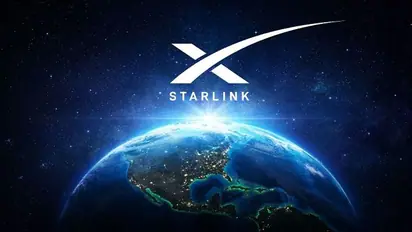Elon Musk's Starlink satellites could burn up the ozone layer, scientists warn

Synopsis
There are currently more than 8,000 internet satellites in low-earth orbit, of which about 6,000 are Starlink ones, a press statement said. The problem comes when the satellites fall into Earth's atmosphere to burn up, producing aluminum oxide, the scientists said, triggering a chemical reaction that's highly destructive to the ozone.
Internet satellite networks like Elon Musk's Starlink could be depleting the Earth's ozone layer, researchers from the University of Southern California have claimed. According to study that was published in the journal Geophysical research Letters, SpaceX's Starlink is allegedly spewing large volumes of gaseous aluminium oxide into the atmosphere, which has the potential to destroy ozone.
Notably, human survival depends on the ozone layer. It filters out the Sun's damaging UV rays, which can lead to skin cancer when exposed to them and even interfere with food production and agricultural harvests.
"Only in recent years have people started to think this might become a problem. We were one of the first teams to look at what the implication of these facts might be," said co-author and University of Southern California astronautics researcher Joseph Wang in a statement.
Internet satellites in low Earth orbit have a short lifespan of about five years. Approximately 6,000 of the over 8,000 broadband satellites in low-Earth orbit at the moment are Starlink satellites. According to experts, these satellites are built to burn up in the atmosphere at the end of their useful lifetimes. They may thus spew nearly a thousand tonnes of aluminium oxide each year, which would be a 646 percent increase above natural levels. Aluminium oxides deplete ozone by causing it to react destructively with chlorine.
"Satellites burn up at the end of service life during reentry, generating aluminium oxides as the main byproduct. These are known catalysts for chlorine activation that depletes ozone in the stratosphere," the researchers wrote.
"We find that the demise of a typical 250-kg satellite can generate around 30 kg of aluminium oxide nanoparticles, which may endure for decades in the atmosphere," they stated.
The study also discovered that, with current plans for satellite launches, the abundance of these oxides might expand even more, with an approximate eight-fold increase observed between 2016 and 2022.
As per Independent, SpaceX alone has permission to launch another 42,000 Starlink satellites while Amazon and other tech giants also plan to launch thousands of satellites in the coming years. Concerns over space debris, which may lead to collisions and harm other spacecraft, are further raised by the quick rise in the number of satellites.
Find the latest Technology News covering Smartphone Updates, AI (Artificial Intelligence) breakthroughs, and innovations in space exploration. Stay updated on gadgets, apps, and digital trends with expert reviews, product comparisons, and tech insights. Download the Asianet News Official App from the Android Play Store and iPhone App Store for everything shaping the future of technology.